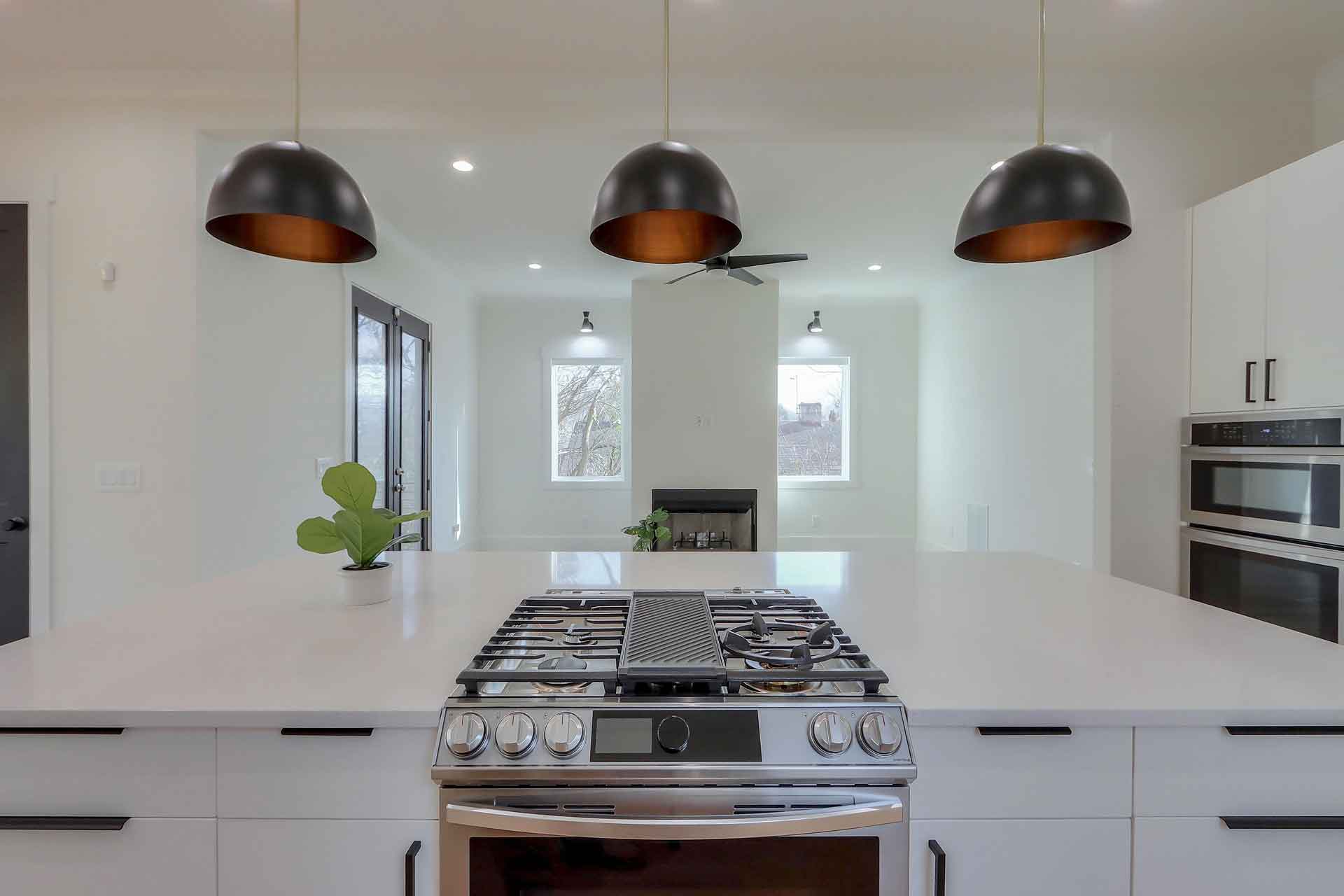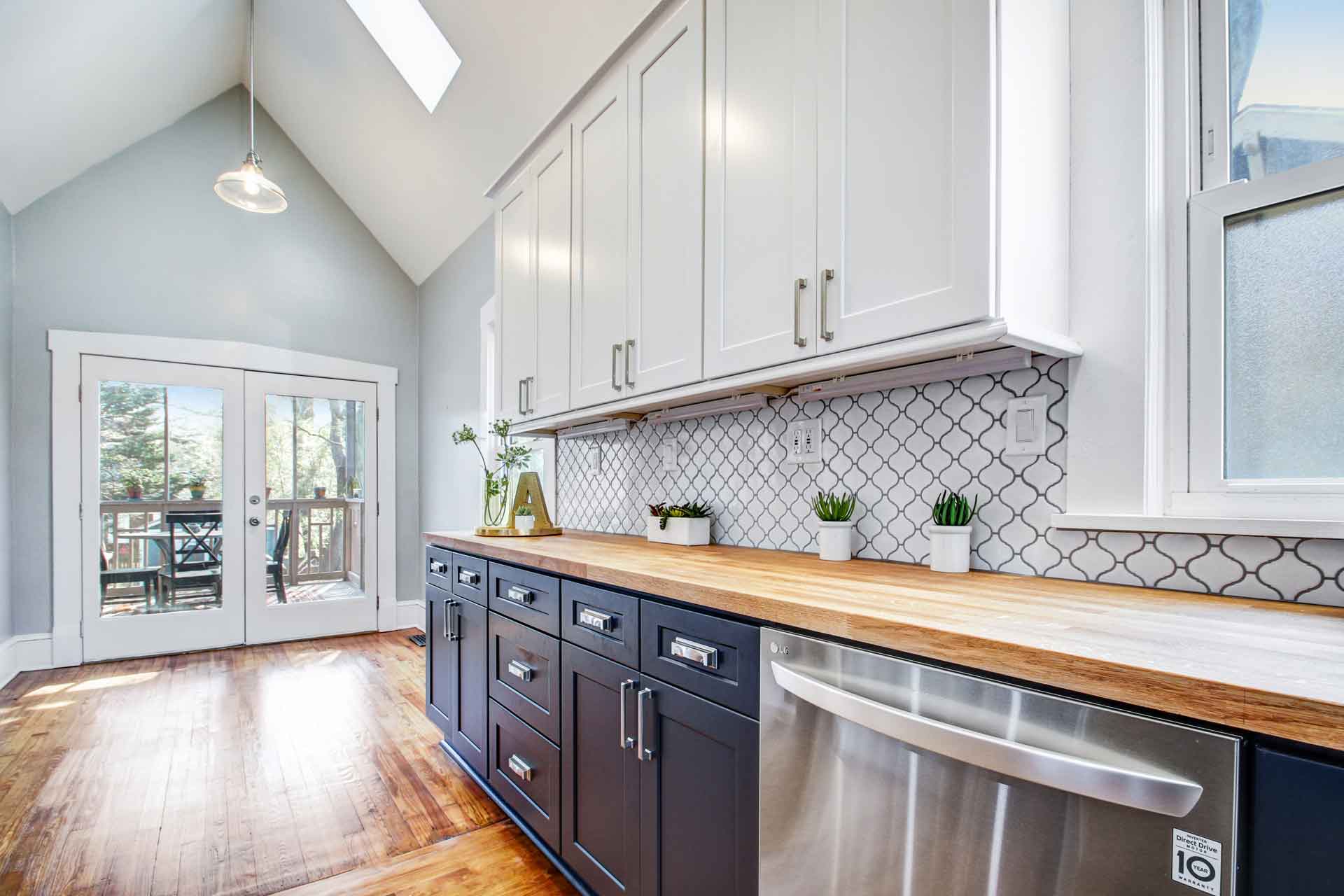Creating an eco-friendly, sustainable kitchen isn’t just good for the environment – it can also save you money on energy costs in the long run. Whether you’re starting from scratch and remodeling your entire kitchen or simply looking to make small tweaks here and there, following these tips will help you create a greener, more efficient space without breaking the bank.
It doesn’t take much effort to give your kitchen an eco-friendly makeover; from switching out light bulbs to investing in smart appliances, making even small changes can have a huge impact when it comes to reducing energy use and saving some cash.
Read on for our top tips for creating a green and cost-efficient kitchen that’s perfect for your home!
Invest In Energy-Efficient Appliances
Investing in energy-efficient appliances is a great way to reduce your kitchen’s electricity consumption and save money.
High efficiency washers, dryers, refrigerators, ovens, and dishwashers all use less power than their standard counterparts while still providing the same level of performance. Replacing these older models with new energy-efficient ones can help you cut down on your monthly utility bills significantly.
When shopping for an appliance upgrade or replacement, it’s important to look for Energy Star certified products. These have met the strict requirements set forth by the Environmental Protection Agency (EPA) and Department of Energy (DOE). They are designed to be more efficient at using energy resources than traditional models, so they can help you lower both your carbon footprint and costs at the same time.
Making smart decisions when purchasing appliances will go a long way towards creating an eco-friendly and sustainable kitchen that also helps you save money.
From selecting low wattage bulbs to investing in energy-efficient machines, there are plenty of ways to make sure that your home uses fewer resources without sacrificing quality of life.
Think green – every little bit counts!

Switch To Led Light Bulbs
Are you looking for ways to make your kitchen eco-friendly and sustainable? Want to cut down on energy costs but don’t know how? Let’s start with something simple: switching to LED light bulbs!
LEDs can help minimize heat, reduce waste, and save money in the long run. The first thing to consider when shopping for LED light bulbs is wattage. By replacing an incandescent bulb of 60 watts or more with a comparable LED bulb, you’ll use 80% less electricity. That means big savings on your utility bill each month!
Additionally, since LEDs produce very little heat compared to other types of bulbs, they can help keep your kitchen cool during warmer months without running up those electric bills. LEDs also last much longer than traditional incandescent bulbs—up to 25 times as long! This means fewer trips back to the store and less money spent on replacement bulbs over time.
And because LEDs are made from recyclable materials like plastic, metal, and glass, using them helps reduce waste that would otherwise end up in landfills. So why not switch to LED lights today? Not only will it save you money in the long run, but it’s also one small step towards creating an eco-friendly and sustainable kitchen environment where everyone can enjoy saving on energy costs while doing their part for the environment too!
Recycle And Reuse Wherever Possible
Moving on from LED light bulbs, another great way to create an eco-friendly and sustainable kitchen is by recycling and reusing wherever possible. Reducing waste can save energy costs significantly as it helps keep resources out of landfills, reduces the need for new products, and lessens pollution caused by extracting resources.
One excellent way to reduce your kitchen’s carbon footprint is to buy secondhand items when you can. By doing this, you are helping to divert materials from being wasted or thrown away while also saving money in the process! From cookware to furniture, searching through thrift stores or online platforms such as Craigslist can be a great way to find affordable and quality items that will last for years.
Reusing plastic containers like jars, tins, cans and other food packaging instead of buying new ones is also a great idea. These containers have multiple uses which means they don’t have to be thrown away after one use – so think outside the box!
For example, glass jars make perfect storage for leftovers or small ingredients; old wine bottles can be used for decorative vases or oil lamps; aluminum cans work well for seed starters; and egg cartons can easily become plant pots.
Taking these simple steps towards sustainability not only saves money but also helps protect our planet’s precious natural resources over time – all without sacrificing style!
Utilize Natural Light
Harvesting natural light from the sun is a great way to reduce energy costs in your kitchen. Not only can you save money, but bringing sunlight into your kitchen also creates an inviting space for friends and family.
To maximize the benefits of harvesting sunlight, it’s important to take steps that will allow as much natural light as possible to enter your kitchen without creating too much heat.
If you have large windows in your kitchen, consider installing window treatments such as blinds or shades on them so that you can control the amount of direct sunlight entering the room during warmer months. It’s also helpful to keep all curtains open throughout the day whenever possible. This allows more natural light to stream in while keeping out any excess heat build up.
Additionally, adding mirrors near sources of natural light like windows helps bounce back some additional illumination into darker areas of the kitchen – reducing both glare and electricity usage simultaneously!
By taking advantage of these simple strategies, you’ll be able to make the most out of natural lighting in your sustainable kitchen – allowing you to harvest precious sunlight and reduce excessive use of energy-draining lights throughout the day.
Install Insulation
Once you’ve taken advantage of the free, natural light available to you in your kitchen, it’s time to take a look at ways that you can reduce drafts and keep energy costs low.
Installing insulation is one of the most effective means for achieving this goal – but what kind?
The type of insulation that works best may vary depending on your climate and the design of your home. Generally speaking, thicker materials such as foam board or spray foam perform better than thinner options like fiberglass batting.
Additionally, using thermal curtains or drapes over windows can help reduce cold air loss during winter months. Not only will these ensure comfort for those inside, they’ll also save money by reducing heat loss through the glass panes.
Finally, weatherizing any gaps around doors and windows with caulk or expanding foam will go a long way towards keeping warm air from escaping and cold air from entering. This is especially important if you live in an area where temperatures drop below freezing frequently throughout the year.
Taking all these measures together should drastically cut down on energy expenditures while providing maximum comfort levels within the kitchen space.

Consider Solar Energy
Making your kitchen eco-friendly and sustainable can start with harnessing the power of solar energy. Solar panels have become increasingly popular, as they are a great way to reduce both electricity costs and environmental impact. Plus, installing them on the roof of your home is relatively easy and cost effective in many countries.
Not only will you be able to generate your own clean energy from the sun’s rays but also sell back any excess energy generated to the local utility company for an additional source of income.
In addition to utilizing solar power, another way to cut down on your kitchen’s energy usage is by tapping into wind energy. Wind turbines are becoming more commonly seen around homes as people look for ways to decrease their reliance on traditional fossil fuels. They come in various sizes so that even small residential buildings can take advantage of this renewable resource while reducing emissions and saving money at the same time.
By combining these two forms of alternative energy sources with other measures such as reducing food waste, you can create a truly green kitchen setting that is both budget friendly and environmentally responsible.
So why not make the most out of what nature has given us? Start planning today how you could use wind and sunlight together with other strategies to maximize sustainability!
Practice Smart Habits In The Kitchen
Switching to solar energy is just the beginning of creating an eco-friendly, sustainable kitchen. The next step in cutting down on energy costs is practicing smart habits in the kitchen. By making small changes and being mindful of our actions, we can make a big impact with minimal effort.
Firstly, it’s important to minimize food waste! We all know that throwing away food isn’t good for the environment or our wallets, so try to plan meals ahead and create shopping lists so you don’t end up buying more than necessary. When cooking, be mindful not to prepare too much either – leftovers are great but they shouldn’t be taken for granted.
Also, if you have scraps leftover from cooking, use them to make compost instead of throwing them out. Composting helps enrich soil and provides vital nutrients for plants.
Another way to cut down on energy costs is by conserving water when washing dishes or vegetables at home. Make sure you only run the tap when absolutely necessary and reuse any excess water where possible – think about collecting rainwater as well!
Additionally, invest in low flow fixtures like shower heads or faucets which help reduce your water consumption without compromising on performance.
Making these simple adjustments can go a long way towards reducing your carbon footprint and becoming more conscientious about sustainability in the kitchen – something we could all benefit from!






